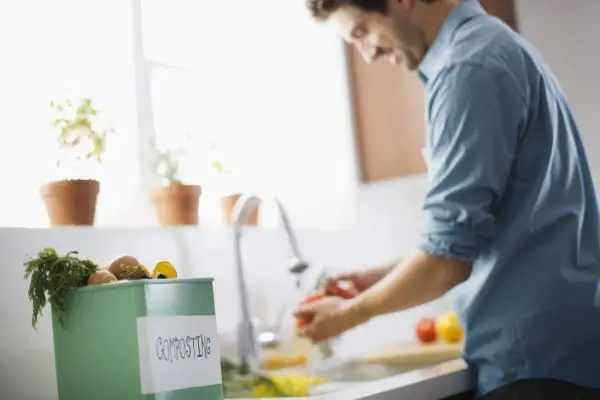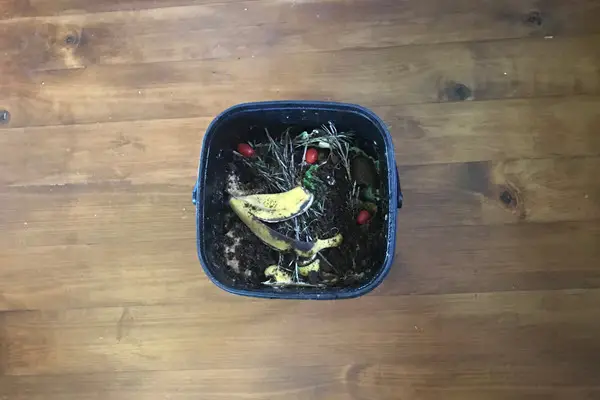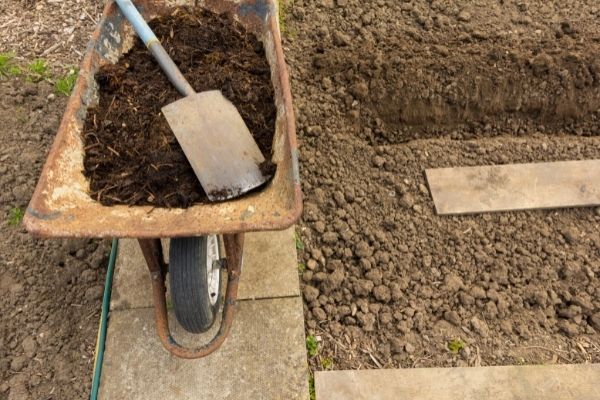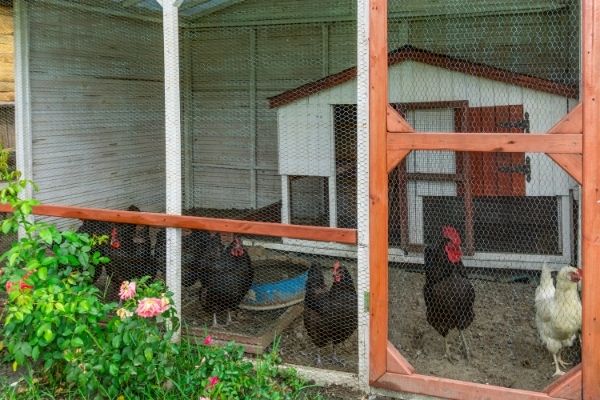11 Best Composting Methods [Which Is Right for You?]
Composting is my favorite topic when it comes to living more sustainably. I love talking about and I love talking people into it! As part of these conversations, I often get asked what the best composting methods are and which one is my favorite?
Sorry- there is no straightforward answer! It really is about what works best for you. Often, the answer is more than one method.
Personally, I use a few methods at home: I have two Bokashi buckets, a worm farm (my kids love it), a composting tumbler and I often have a dedicated composting pile.
Why do I do this?
Composting is a wonderful way to reduce household waste and create organic fertilizer for the lawn and garden. Even countless non-gardeners have adopted this strategy to lessen the impact their family has on the planet!
The added bonus is to have a ‘clean’ trash bin with no bad smells or insects that are attracted to rotten food.

It’s never been easier to learn about and start a compost system of your own. What’s not easy, however, is sifting through the most popular methods to find one that works for you.
When choosing a composting method, it’s important to remember that there is no wrong answer. The only thing that matters is which method suits your home and lifestyle best.
Ready to learn about the top composting methods and what each has to offer? Let’s get started:
11 Composting Methods For The Home And Garden
1. Heap or Pile
The most traditional composting method, and the one many gardeners are familiar with, is the heap or pile method.
This straightforward composting setup requires little more than a bit of outdoor property and a pitchfork to get started. Some gardeners opt to build a fence around the pile to keep the compost from spreading out too much. I often dig a shallow hole too to facilitate worm activity around my pile of food scraps.
2. Composting Bin
The composting bin is probably the most popular composting method of today. It’s not as quick and affordable to set up as a compost heap. But it comes in as a close second!
Composting bins come in a wide range of styles, sizes, and materials. You can purchase a ready-made bin or DIY one fairly easily. Both enclosed and open-top bins are available.
While basic bins are much more compact and aesthetically pleasing than a compost heap, you cannot use them indoors.
3. Composting Tumbler
In a sense, a composting tumbler is just an upgraded bin. The key difference is that this composting method can be rotated to aerate and distribute the materials inside with minimal labor.
All tumblers are enclosed (otherwise, the materials inside would just spill out) and tend to be smaller than other outdoor composting containers.
If you have a small backyard, a composting tumbler is likely the ideal method! This is also the best composting method for outdoor gardeners with limited mobility who cannot safely turn compost by hand.
4. Bokashi
Bokashi is not technically the same as composting — instead, it’s often referred to as “pre-composting.” But this method definitely deserves a place on our list!

In fact, this tightly sealed system is my favorite kitchen counter method and it is so efficient. The enclosed bucket is odor-free (when properly closed) and insect-free.
Bokashi is a Japanese food disposal method that utilizes fermentation, rather than decomposition, to rapidly break down kitchen scraps. Bacteria are still responsible for this process. However, unlike the aerobic bacteria used in regular compost, Bokashi relies on anaerobic bacteria.
One of the biggest advantages of Bokashi is that you can compost pretty much all types of food in there, including things that are often not recommended for a traditional compost bin: meat, dairy, citrus peel, etc.
The end result of Bokashi is not fully decomposed into usable humus. To complete the process, you can add the finished Bokashi to another compost system (bin, tumbler, pile, etc) or bury it in the soil to finish decomposing.
5. Vermicompost – Worm Composting
This method is my kids’ favorite. It is like worms have become their pet and they take great pride in feeding them.
Vermicomposting is an exciting take on traditional compost that utilizes living worms instead of just bacteria to break down organic waste.
The concept of farming worms for compost can seem intimidating. But this composting method is actually extremely simple and low-maintenance. Plus, vermicomposting can be completed either indoors or outdoors.
6. Trench
Trench composting is a less popular method that cuts out the “middle man.”
This composting method involves digging a deep hole or trench in the area to be planted and fertilized. Compostable kitchen scraps and yard debris is buried in the hole or trench and covered with soil. Once the composting trench is covered, you can forget about it and let nature do the work!

This composting method is ideal if you live somewhere that frowns up above-ground compost. It’s extremely pest-resistant and there’s practically zero chance of odor. However, this method will only work for garden beds that are not yet planted. A good option is to have a few dedicated areas that you can alternate throughout the year.
7. Sheet Mulch
Sheet mulching is very similar to trench composting. The only difference is that sheet mulch isn’t buried beneath the soil’s surface. It is placed in a layer on top.
Again, sheet mulching places compostable material exactly where it is needed, saving space, time, and labor. But this composting method won’t really work for established gardens.
8. Three-Bin
The three-bin compost method takes a LOT of work and oversight.
However, this is one of the most efficient systems for anyone producing large amounts of compost for their garden (or elsewhere).
The advantage of the three-bin method is that you can constantly cycle new material into the system without disrupting the current decomposition process.
As the name implies, this method requires three separate bins. The first bin is where brand new organic waste goes. Once it reaches a certain temperature — usually 160℉ at most — everything inside is moved to the second bin. Repeat this until you’re left with finished compost in the third bin.
9. Chicken Coop
Chickens are avid scavengers. And, as all keepers of chickens know, they love to scratch at the ground. In other words, chickens are walking, clucking composting machines.

There are many ways to take advantage of your chickens to create compost. Some people just add kitchen scraps to the floor of their chickens’ coop. Others build a structure specifically for the chickens to feed on.
An added bonus of this composting method is that it feeds your chickens at the same time it produces usable fertilizer. Plus, chickens will guarantee your compost stays pest-free.
Having chickens also mean you have a constant supply of chicken poop – a quick hose and their soft poop will become a great nutrient for your soil.
Depending on where you live, it is important to remember chickens may attract predators such as foxes.
10. Electric Food Recycling
Food recyclers are compact countertop gadgets that can transform organic kitchen waste into dry humus in a matter of hours. Like Bokashi buckets, food recyclers produce unfinished compost that must be buried to finish decomposing.
Food recycling requires very little maintenance. While you can only process one small batch at a time, filling and emptying a rood recycler takes hardly any time at all. This is a great method for reducing household kitchen waste as a whole.
Electric food recycling is one of the most expensive composting methods to get started. But it’s also the easiest composting method for anyone living in an apartment or other small home.
11. Green Cone
The Green Cone is a permanent installation that breaks down and funnels organic matter straight into the soil. The system is dug into the ground and can operate for up to 5 years without maintenance.
The Green Cone essentially becomes an extension of the soil beneath, letting you conveniently introduce household waste matter to the ecosystem’s existing decomposition process. Just add food scraps to the top and nature’s workers — bacteria, worms, etc. — will take care of the rest.

Green Cone Solar Digester
There is no way to “harvest” finished compost from the Green Cone, which can be a pro or a con depending on your goals. This composting method is best for those looking for more sustainable disposal methods rather than usable fertilizer (though the system can be installed in a garden bed!).
Which Composting Method Is The Best For You?
Only you can decide which is the best compost method for you and your household!
With that said, asking yourself a few simple questions can help narrow down your options:
- Do you have a garden? Some composting methods produce usable fertilizer no matter what. Others reduce organic waste that must be further processed to feed a lawn or garden. If you want to create your own fertilizer, opt for one of the former methods.
- Do you have the space needed to compost outdoors? Outdoor composting is ideal in many cases. But there are several indoor-approved methods to choose from if you don’t have a backyard at your disposal.
- How long will you be composting? If you plan to compost for years to come, invest in a permanent installation like an open-air pen or Green Cone. If you are looking for a temporary solution (or plan to move in the near future), opt for something more portable.
- Does your neighborhood allow all types of composting? Local regulations may limit which composting methods you are allowed to partake in. Worst case scenario, indoor composting can be done anywhere.
- Would you prefer to buy or DIY a composting container? Several indoor and garden composting methods require special equipment. While DIYing a compost system is a wonderful idea, it can limit which methods are available to you.
- Are you comfortable handling worms? Vermicomposting is an all-around great method for waste reduction and fertilizer production. But those afraid of creepy-crawlies should steer clear.
- Do you own chickens? Chickens are a wonderful resource for any aspiring composter. However, you probably shouldn’t purchase chickens for this purpose alone. Like any other pet, there are responisibilities involved with caring for them.

Frequently Asked Questions
Which composting method is the fastest?
From start to finish, the fastest composting method is food recycling. Many electric recyclers can create compost (or a compost-like material) within a matter of hours.
The next fastest methods are those that utilize live animals, such as worms or chickens. These composting methods can create finished fertilizer within around 3 months.
What composting method is the cheapest to start?
Most composting methods are surprisingly affordable! But if you’re looking to save as much money as possible, we recommend taking a look at what you already have at your disposal.
Natural composting methods that require no additional materials are the cheapest. These include compost heaps, trenches, and sheet mulch. You may even be able to create a DIY compost bin using supplies you already own.
Also, if you own chickens, the chicken coop method is practically free.

![11 Best Composting Methods [Which Is Right for You]](https://enviromom.com/wp-content/uploads/2021/09/11-Best-Composting-Methods-Which-Is-Right-for-You.jpg)




